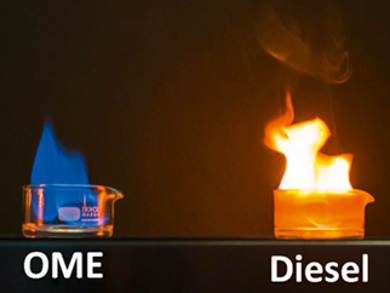Conventional exhaust aftertreatment is getting more and more complex and costly. Therefore, alternative fuels are considered as promising candidates to meet the threshold values for the emission of soot, nitrogen oxides, and unburned hydrocarbons. The application of oligomeric oxymethylene dimethyl ethers (OMEn; CH3(OCH2)nOCH3, n = 1 – 5) as diesel fuels would lead to a significant reduction of soot and NOx formation during the combustion process. Besides unlimited miscibility with diesel, they are little corrosive and show favorable health- and safety-related properties.
The synthetic route starts with trioxane and dimethoxymethane as educts. Zeolite H-BEA 25 is used as catalyst. Usually, OME mixtures contaminated with residual trioxane are obtained as product. To inhibit this contamination, Ulrich Arnold and co-workers from the Karlsruhe Institute of Technology (KIT), Germany, applied substoichiometric amounts of trioxane. This enabled the production of OME2 with more than 99.9 wt % purity.
Physicochemical and fuel data of the product have been determined. Such data are crucial for future fuel evaluation, optimization, and standardization.
- High Purity Oligomeric Oxymethylene Ethers as Diesel Fuels,
Diana Deutsch, Dorian Oestreich, Ludger Lautenschütz, Philipp Haltenort, Ulrich Arnold, Jörg Sauer,
Chem. Ing. Tech. 2016.
DOI: 10.1002/cite.201600158




